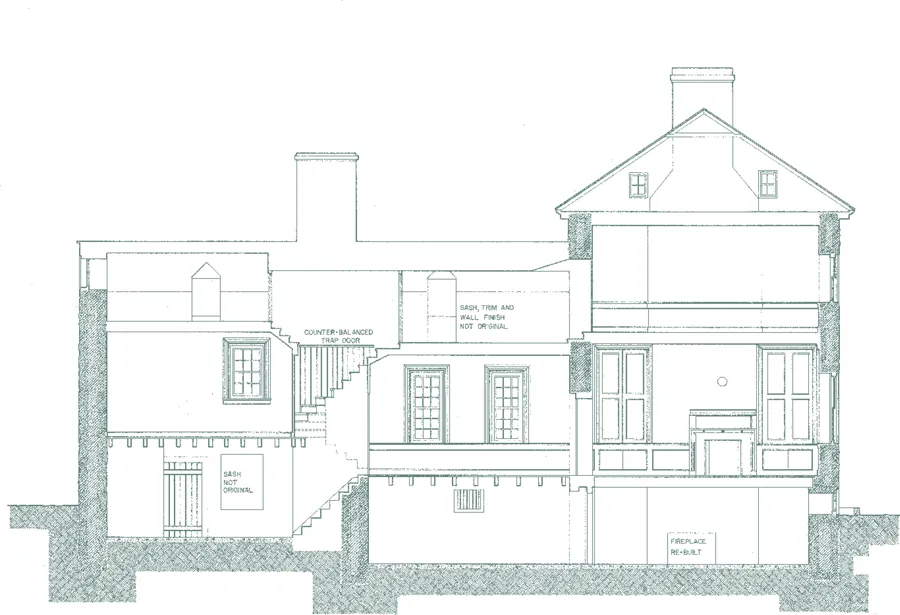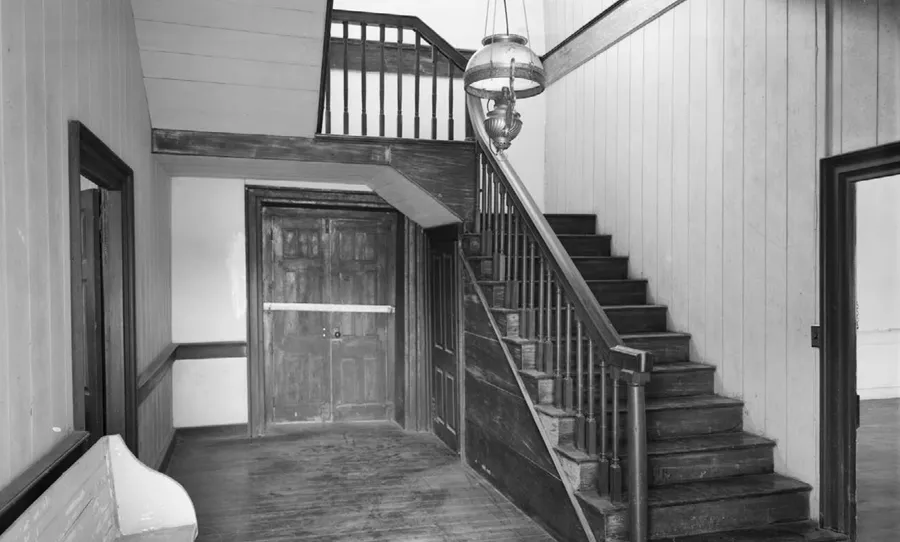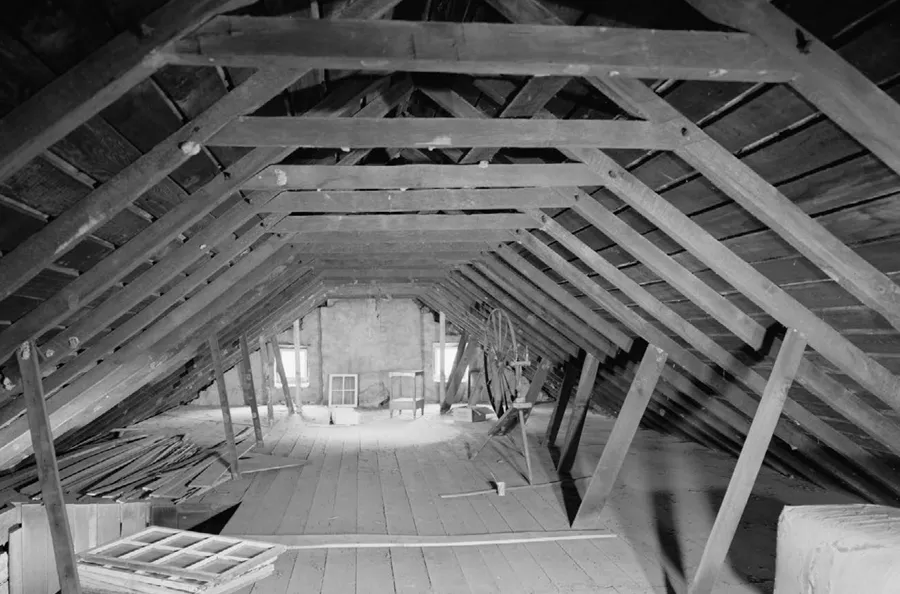![]()
Residences
Rock Castle Hendersonville, 1784–1797(?)
Hays-Kiser House Antioch, ca. 1796
Travellers’ Rest Nashville, 1799–1885
Cragfont Gallatin, 1802
Oaklands Murfreesboro, 1815, 1825, 1859–1860
The Hermitage Nashville, 1819
Wessyngton Robertson County, 1819
Castalian Springs—Wynnewood Gallatin, 1828
Carter House Franklin, 1830
Fairvue Gallatin, 1832
Rattle and Snap Columbia, 1845
Adolphus Heiman House Nashville, 1845–1850(?)
Belmont Nashville, 1850
Worker’s House Nashville, ca. 1850
Two Rivers Nashville, 1859
Meticulously cut stone formed a bastion against the wilderness.
![]()
Rock Castle
ROCK CASTLE, THREE QUARTERS OF a mile east of Hendersonville on Indian Lake Road in Sumner County, represents a transitional element in frontier Tennessee architecture. It was built in the late 1700s by Gen. Daniel Smith, on a land grant of 3,140 acres given him for service in the Revolutionary War. Rock Castle is reminiscent of the simple homes of the Eastern Seaboard, from which General Smith came to Tennessee. It was the first of three Middle Georgian stone houses built in Sumner County and is among the first important houses in the state to reflect a measure of architectural planning.
Owned by the State of Tennessee since 1969, Rock Castle is presently under consideration as a museum and research center.
The house was presumably designed by General Smith himself, although no plans have been found; and Smith’s substantial library is not known to have contained any architectural or pattern books.
A native Virginian, Smith was a graduate of William and Mary College and a surveyor by profession. Thomas Jefferson said of him that “Daniel Smith was a practical surveyor, whose work never needed correction. For intelligence, well-cultivated talents, for integrity, and usefulness, in soundness of judgment . . . he was equalled by few men.”1 At the end of the Revolutionary War, Smith settled in what is now Sumner County. He was appointed surveyor in 1783 to lay out the town of Nashville. He served as trustee of Davidson Academy, the first institution of learning chartered in the Cumberland country; and he was a member of the North Carolina Convention which ratified the U.S. Constitution in 1789. When President Washington appointed William Blount governor of the Territory of the United States South of the River Ohio, Daniel Smith was made secretary. He was frequently acting governor in Blount’s absence from the territory. Smith was the first person to publish a map of Tennessee, which he made from his own surveys. In 1796, Smith was chairman of the committee charged with drafting the first constitution of the State of Tennessee. Appointed in 1798 to fill out Andrew Jackson’s unexpired U.S. Senate term, following Jackson’s resignation, Smith was elected U.S. Senator again in 1805 and served until 1809.
It is generally agreed that General Smith started construction of Rock Castle in 1784, although there is no primary documentation for this date. The house was constructed of native gray limestone quarried a few hundred yards from the building site.2 An almost virgin forest surrounded the area, and it is probable that the lumber used was cut there. Joists and rafters of oak and cedar were used, the rafters being marked on each side with roman numerals made by straight saw cuts, indicating that they were cut and fitted on the ground.
Vertical Section. HABS drawing by Robert J. Dunay, 1970. Traced from measured drawings by Cooper and Warterfield, Architects
Construction was slow: there were problems with Indians, a lack of skilled workmen, and a scarcity of proper building materials. In 1793, Mrs. Smith wrote to her husband that the builder had stopped sawing wood for the interior and that Indians were still making trouble. On the same day, July 20, the builder also wrote to Smith, reporting that the walls were about one foot above the window sills, that frames for the first floor were in, and that he was working on assorted joists, lintels, and window frames.3 The exact date on which the house was completed is unknown, and the first reference to Rock Castle as habitable is found in Governor John Sevier’s journal, where he records arriving there on May 24, 1797, and staying the night.
Smith’s sister, Mrs. Peter Hansborough, had two sons, Peter and Smith, who came to Sumner County from Philadelphia to work on their uncle’s house.4 Correspondence between Smith Hansborough and General Smith indicates that the former was in charge of construction and served as a carpenter on the job. The Hansboroughs recruited local help, and a William Stamp is known to have worked on the stone walls. A descendant of General Smith remembers hearing that the original stonemasons and carpenters were from Philadelphia, but that they were all killed by Indians and that their replacements were less skilled local tradesmen.5
The house is L-shaped, two stories tall, and was framed with hand-hewn trusses, notched and pegged. There are chimneys at the east and west ends of the original structure and one large chimney over the kitchen wing. Interior downstairs walls with fireplaces all had a central mantel, overmantel, and side cabinets, set within an integrated wood-paneled wall. Most of the interior woodwork, including the paneling, is of black walnut. A special decorative feature is the chair rail throughout. Door and window architraves were of hewn poplar. Roof shingles were riven of cedar.6 The hinges are a notable feature: they are an H-L type, with small square leather washers between heads and hinge.
The stairwell is reminiscent of colonial East Coast architecture.
Sometime between 1825 and 1849, during the lifetime of General Smith’s son George, the exterior of the house was remodeled. Reflecting the growing taste for Greek revival architecture, a wooden front porch was added.7 A porch at the rear, since replaced by a facsimile in stone, was presumably added at the same time. In 1886, the original cedar shingles were replaced by a slate roof, causing the rafters to bend under its weight. Electricity was installed in the 1940s.8
In 1953, during construction of the Tennessee Valley Authority’s Old Hickory Lock and Dam on the Cumberland River, much of the Smith land was condemned and flooded. At this time, the floor of the basement, originally tamped earth, was done over with concrete, and concrete box staircases were added to the two basement entrances.
In 1959, the rear upstairs bedroom in the leg of the ell was renovated, and gypsum board was placed over the original plaster walls. In 1964, a stone slab porch with wooden roof replaced the old one. The louvered shutters on the house are not original; they may have been installed around the middle of the nineteenth century. It is likely that the original shutters were solid wood panels, offering better protection from Indian attacks.
The nearby forest provided lumber for the heavy timbers.
There were at least five outbuildings on the estate: a spring house, smokehouse, carriage house, and slaves’ quarters. Of these, only the smokehouse has survived. It stands south of the dwelling, within 35 feet of the shoreline of Old Hickory Lake.
NOTES
1. Kenneth McKellar, Tennessee Senators as Seen by One of Their Successors, p. 113.
2. “Rock Castle,” American Historical Magazine, V, No. 4 (October 1900), 293.
3. Ibid., p. 200. See also Daniel Smith Papers, Tennessee Historical Society, Tennessee State Library and Archives.
4. Joseph D. Delaney, “A Historical Study of Rock Castle,” p. 14.
5. Interview, Miss Sarah C. Berry.
6. Walter T. ...




